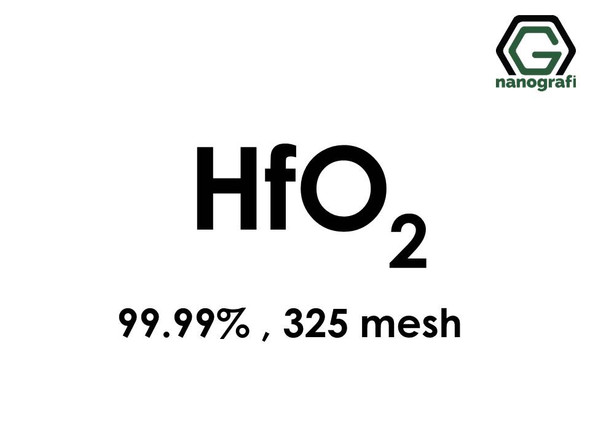Hafnium (Hf) Micron Powder, Purity: 99.9 %, Size: 325 mesh
- SKU:
- NG01EM1801
- Shipping:
- Calculated at Checkout
Frequently bought together:
Description
25 grams: 295€
100 grams: 840€
500 grams: 2340€
1000 grams: 3750€
Hafnium (Hf) Micron Powder
Purity: 99.9 %, Size: 325 mesh
Technical Properties:
| Purity | 99.9% |
| Particle Size | 325 mesh |
| Density | 13.09 g/cm³ |
| Boiling Point | 5400 °C |
| Melting Point | 2222 °C |
| Coeff. of Expansion @ 20ºC | 5.9 x 10⁻⁶ |
| Electrical Resistivity | 35.1 microhm-cm |
| Crystal Structure | Hexagonal |
| Form | Powder |
| CAS No | 7440-58-6 |
Applications:
- Aerospace & High-Temperature Alloys: Hafnium is a critical additive in nickel-based superalloys used for jet engines, gas turbines, and rocket nozzles. Its high melting point (~2222 °C) and excellent thermal stability enhance creep resistance and oxidation protection in extreme environments. The fine powder form ensures uniform alloying and precise control in metallurgical processes.
- Nuclear Applications: Due to its exceptional neutron absorption cross-section, hafnium is used in control rods for nuclear reactors. Its compatibility with zirconium alloys and corrosion resistance make it ideal for reactor core components and shielding materials in both civilian and defense nuclear systems.
- Electronics & Thin Film Deposition: Hafnium is used in semiconductor manufacturing, particularly in high-k dielectric materials like HfO₂ for CMOS transistors. The micron powder serves as a precursor for sputtering targets, atomic layer deposition (ALD), and chemical vapor deposition (CVD) processes in advanced microelectronics.
- Plasma Cutting & Surface Coatings: Hafnium is employed in plasma torch electrodes due to its high melting point and arc stability. It also enhances thermal barrier coatings (TBCs) and protective layers in aerospace and industrial components, improving wear and heat resistance.
- Additive Manufacturing & Powder Metallurgy: Hafnium micron powder is suitable for powder bed fusion, hot isostatic pressing (HIP), and metal injection molding (MIM). Its fine particle size (325 mesh) supports uniform flow, high packing density, and reactive sintering, enabling the production of complex, high-performance components.






